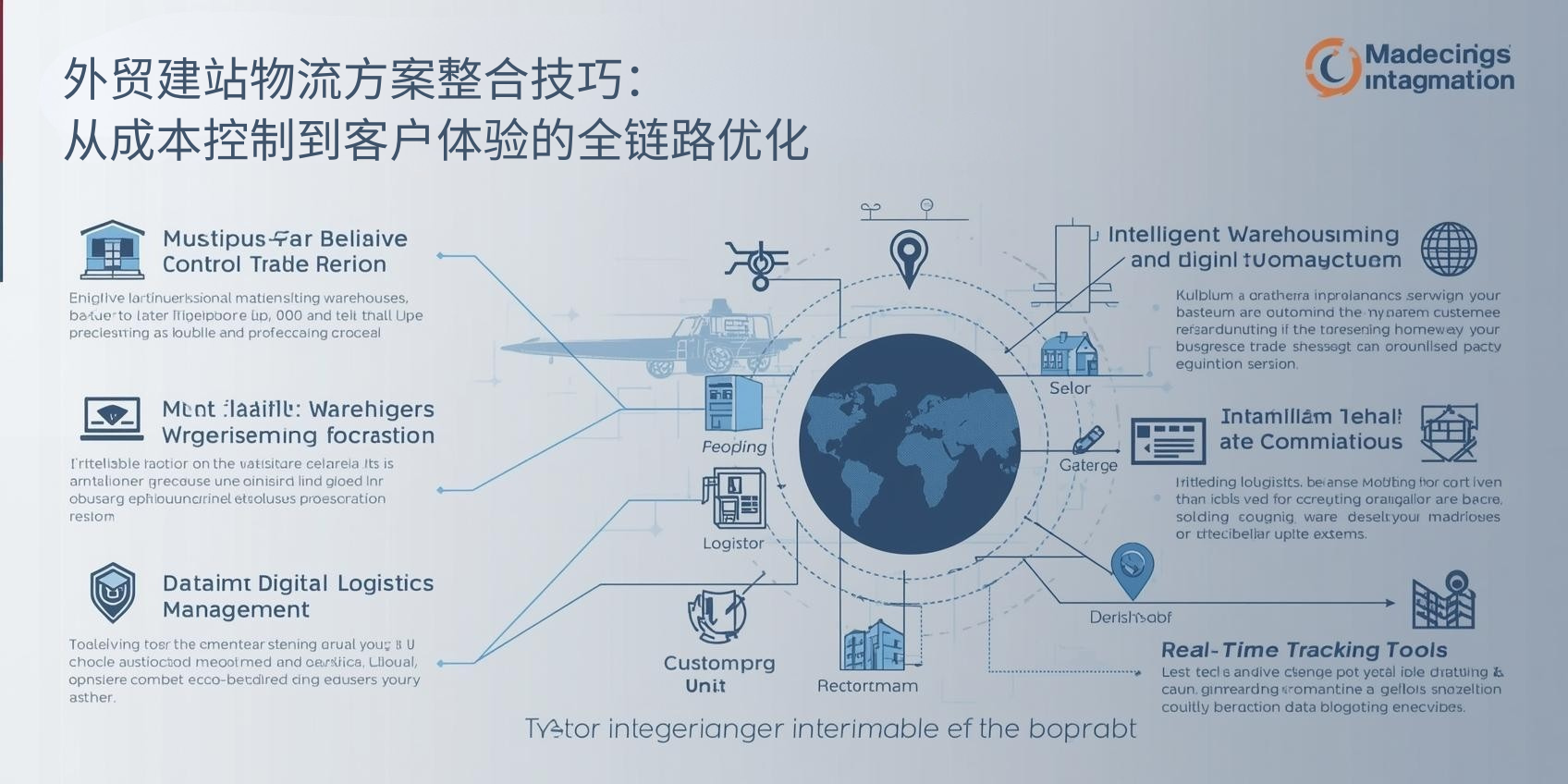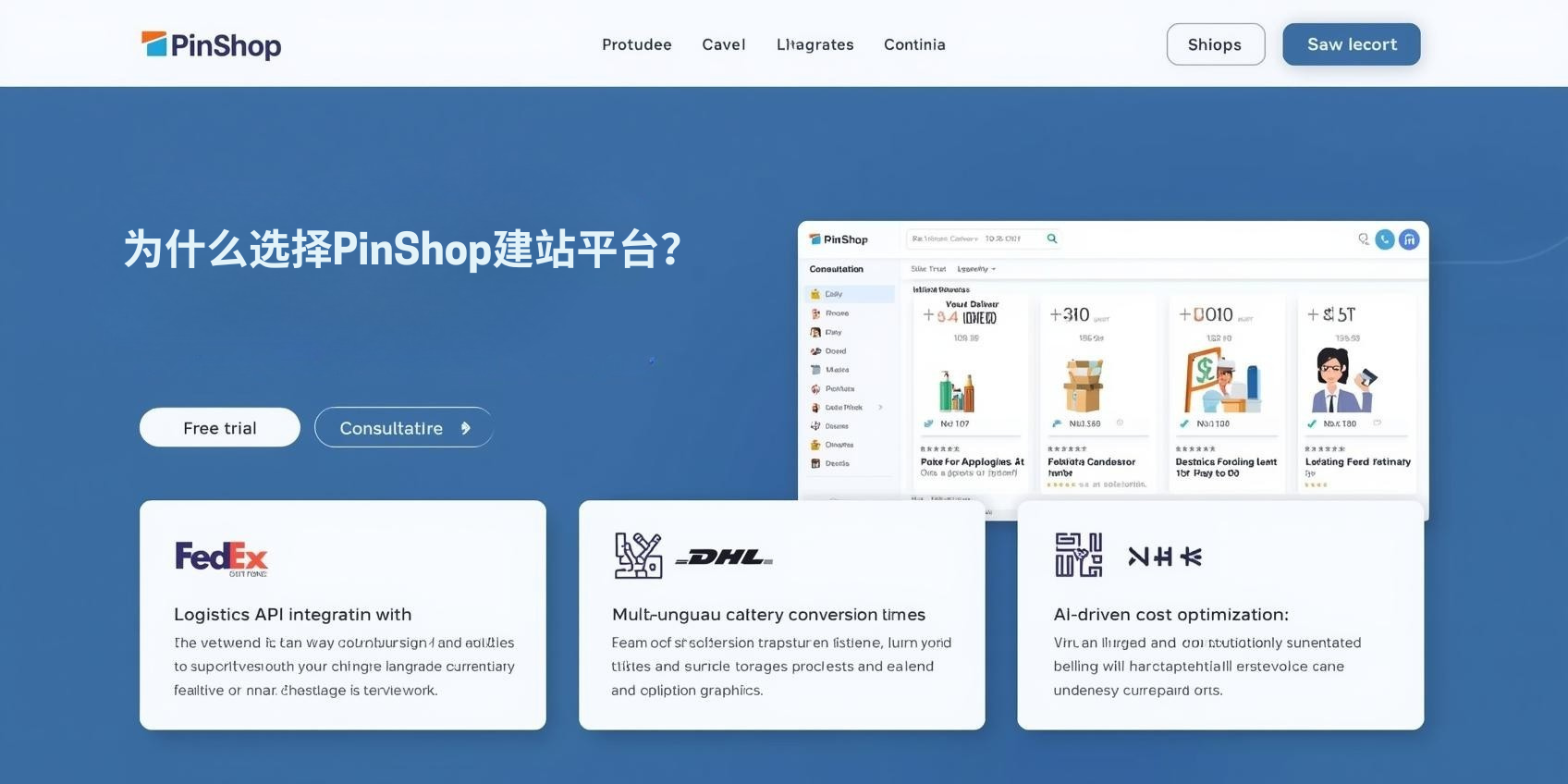International Trade Website Building and Logistics Solution Integration Techniques: End-to-End Optimization from Cost Control to Customer Experience
For foreign trade enterprises, an independent website is not only a brand showcase but also a direct sales channel to overseas customers. However, the logistics experience often becomes the key factor determining repurchase rates—according to statistics from the International Postal Corporation (IPC) , 62% of cross-border consumers abandon their purchases due to logistics issues. How can logistics integration enhance competitiveness? Here are 5 practical tips:
I. Multiple warehouses + intelligent warehousing: Balancing timeliness and cost
Foreign trade website setup requires warehouse layout based on target market:
- For the European and American markets : Prioritize local warehouses in the United States (FBA warehouses) and Germany (EU hub) to shorten delivery time.
- Emerging markets : Partner with logistics providers certified by the World Customs Organization (WCO) to mitigate customs clearance risks.
- Technical support : The nearest warehouse is automatically allocated through the ERP system. For example, if an order comes from France, it will be shipped directly from the German warehouse.
Case Study : A home furnishing brand integrated its logistics API into the PinShop website building system, reducing the delivery time for US orders from 14 days to 3 days and decreasing the return rate by 40%.
II. Data-driven Logistics Management: From "Experience" to "Precision"
- Real-time tracking tools : Integrate with platforms like ShipStation to synchronize logistics status to independent websites, reducing customer inquiry pressure.
- Analysis reports : Regularly review the proportion of logistics costs (it is recommended to keep it within 8% of the order amount) and optimize the channel mix.
III. Localization "Last Mile" Cooperation
Partnerships with local logistics providers (such as J&T in Southeast Asia and Correios in Latin America) can solve last-mile delivery challenges. Refer to the "Global Last Mile White Paper" published by the International Institute of Logistics and Transport (CILT) to select reputable service providers.
IV. Dynamic Shipping Cost Strategy: Flexibly Improving Conversion Rates
- Free shipping threshold : Set a "free shipping on orders over $100" threshold for high-priced regions (such as Switzerland) to encourage customers to combine orders.
- Real-time calculation : Configure shipping rules in the PinShop backend to automatically quote prices based on weight and destination.
V. Reverse Logistics for Returned Goods: A Hidden Competitive Advantage
Offers a convenient return and exchange process:
- Prepaid label : Lowers the barrier to entry for customers.
- Local return points : In cooperation with overseas warehouses, we support on-site destruction or resale to reduce losses.
Why choose PinShop website building platform?
PinShop is designed specifically for foreign trade companies and offers:
✅ Seamless integration with logistics APIs : Supports one-click integration with mainstream channels such as FedEx and DHL.
✅ Multilingual shipping fee display : Automatically converts currency and displays estimated delivery time, enhancing trust.
✅ AI-driven cost optimization : Recommends the optimal logistics solution based on historical data.
Experience PinShop now and build a high-converting independent e-commerce website → [Free Trial Link]
Value of Sustainable Focus
- Subscribe to us to get the "Foreign Trade Website Logistics Cost Calculation Template".
- Join our community and exchange practical experience with 2000+ foreign trade business owners.
Call to Action : If you are looking for a lower-cost, more efficient website building and logistics solution for foreign trade, PinShop's expert team can customize a solution for you - [Schedule a consultation].









